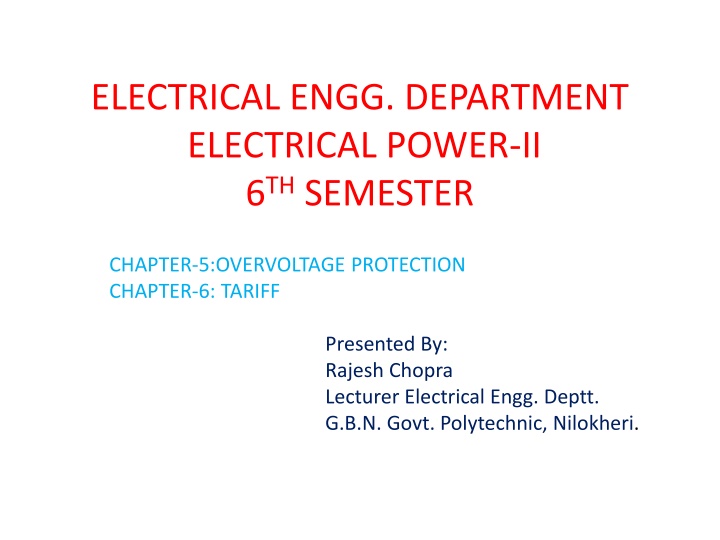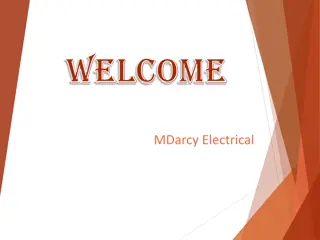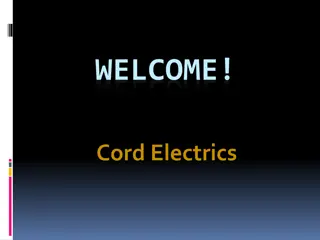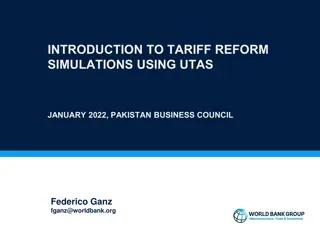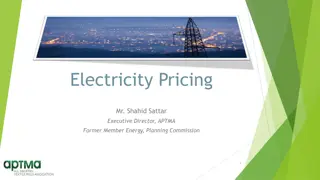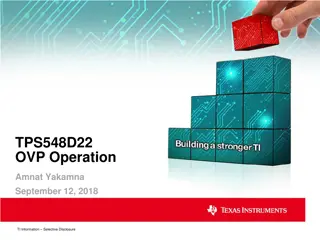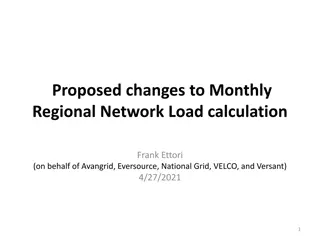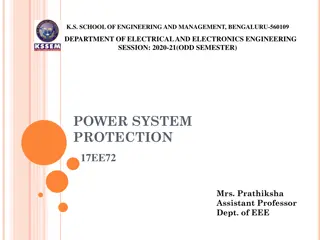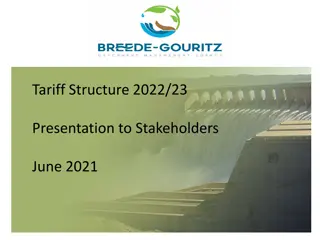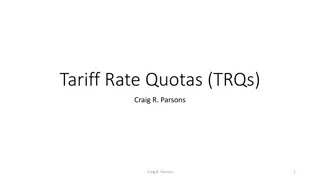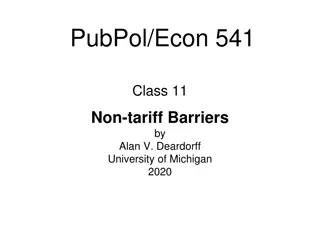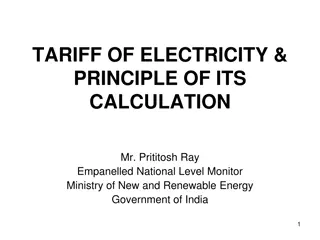Electrical Engineering: Overvoltage Protection and Tariff Concepts
In the field of electrical engineering, it is crucial to understand overvoltage protection mechanisms to safeguard against electrical surges caused by internal and external factors like switching surges and lightning. Various protection methods such as ground wires, earthing screens, and lightning arrestors play a vital role. Additionally, the concept of tariff is explained, detailing different types like simple tariff, flat rate tariff, block rate tariff, and more, each impacting the way energy is supplied to consumers. This comprehensive study is presented by Lecturer Rajesh Chopra from G.B.N. Govt. Polytechnic, Nilokheri.
Download Presentation

Please find below an Image/Link to download the presentation.
The content on the website is provided AS IS for your information and personal use only. It may not be sold, licensed, or shared on other websites without obtaining consent from the author.If you encounter any issues during the download, it is possible that the publisher has removed the file from their server.
You are allowed to download the files provided on this website for personal or commercial use, subject to the condition that they are used lawfully. All files are the property of their respective owners.
The content on the website is provided AS IS for your information and personal use only. It may not be sold, licensed, or shared on other websites without obtaining consent from the author.
E N D
Presentation Transcript
ELECTRICAL ENGG. DEPARTMENT ELECTRICAL POWER-II 6THSEMESTER CHAPTER-5:OVERVOLTAGE PROTECTION CHAPTER-6: TARIFF Presented By: Rajesh Chopra Lecturer Electrical Engg. Deptt. G.B.N. Govt. Polytechnic, Nilokheri.
CHAPTER-5 Causes of over voltage : 1. Internal causes: (a) Switching surges (b) Arcing ground (c) Insulation failure (d) Resonance 2. External causes: Lighting: An electrical discharge in the air between clouds, between the separate charge centres in the same cloud or between cloud and earth is called lighting.
Lighting Strokes: 1. Direct stroke: It may further classified as A- stroke and B-stroke 2. Indirect stroke: This is caused by electrostatic induction.
PROTECTION AGAINST OVER VOLTAGE 1. GROUND WIRES. 2. EARTHING SCREENS 3. LIGHTNING ARRESTORS OR SURGE DIVERTERS
Lightning arrester: It is a device which provides an easy conducting path or relatively low impedance path for the flow of current when the system voltage increases more than the designed value .It behaves as an insulator at normal voltage but provides an easy path for the for the flow of current at abnormal voltages. TYPES OF LIGHTNING ARRESTER The following types are protective against Lightning surges. 1. Rod Gap arrester 2. Horn Gap arrester 3. Expulsion type arrester 4. Electrolytic arrester 5. Thyrite arrester 6. Valve type arrester
Rod gap arrester Horn gap arrester Expulsion type arrester
Chapter-6 Tariff Tariff: It is the rate at which energy is supplied to consumers Tariff types : Simple tariff Flat rate tariff Block rate tariff Two part tariff Three part tariff Maximum demand tariff Power factor tariff
Simple Tariff -The price charged per unit energy supplied is constant irrespective of the number of supplied units - Energy consumption is recorded at consumer s terminals via an energy meter - Most simple type, but doesn t discriminate between types of consumers Flat rate Tariff - Consumers are grouped into different classes according to diversity and load factors. - Each class of consumers is charged at a different uniform rate. - More fair to different types of consumers & quite simple in calculations. - Expensive & complicated as separate meters are required for different load types - Consumers are charged at the same rate irrespective of the magnitude of energy consumed.
Block rate Tariff: Energy consumption is divided into fixed price per unit blocks. The price per unit in the first block is the highest (or lowest) according to the provider s necessities and priorities; accordingly, it is progressively reduced (or increased) for the succeeding blocks of energy. Consumer gets an incentive to consume more (or less) electrical energy. Increased consumption increases the load factor of the system and hence the cost of generation is reduced, nevertheless, it may also overstress a heavily loaded grid with constrained resources, which may in turn imply increasing the cost of generation!!! - Lacks a measure of the consumer s demand. - Used for majority of residential and small commercial consumers.
Two part Tariff: The total charge is split into two components; fixed charges that depend upon the consumer s maximum demand, & running charges that depend upon the number of consumed units. Total charges = b kW + c kWh -Fixed charges are paid irrespective of consuming or not consuming electric energy - Assessing consumer's maximum demand is always erroneous Three part Tariff: -Comprise fixed, semi-fixed and running charges Total charges = a + b kW + c kWh - Applied to big consumers
Maximum Demand Tariff - Similar to two part tariff with the exception that the maximum demand is actually measured by installing a maximum demand meter in the consumer premises - Applied to big consumers
Power Factor Tariff: - Low power factor should be penalized as it increases the Station s equipment rating and line losses (i) kVA maximum demand tariff: Total charges = b kVA + c kWh (ii) Sliding scale tariff (Average power factor tariff): Below (or above) p.f. reference results in additional (or discounted) charges (iii) kW & kVAR tariff : Both active and reactive power are separately charged
